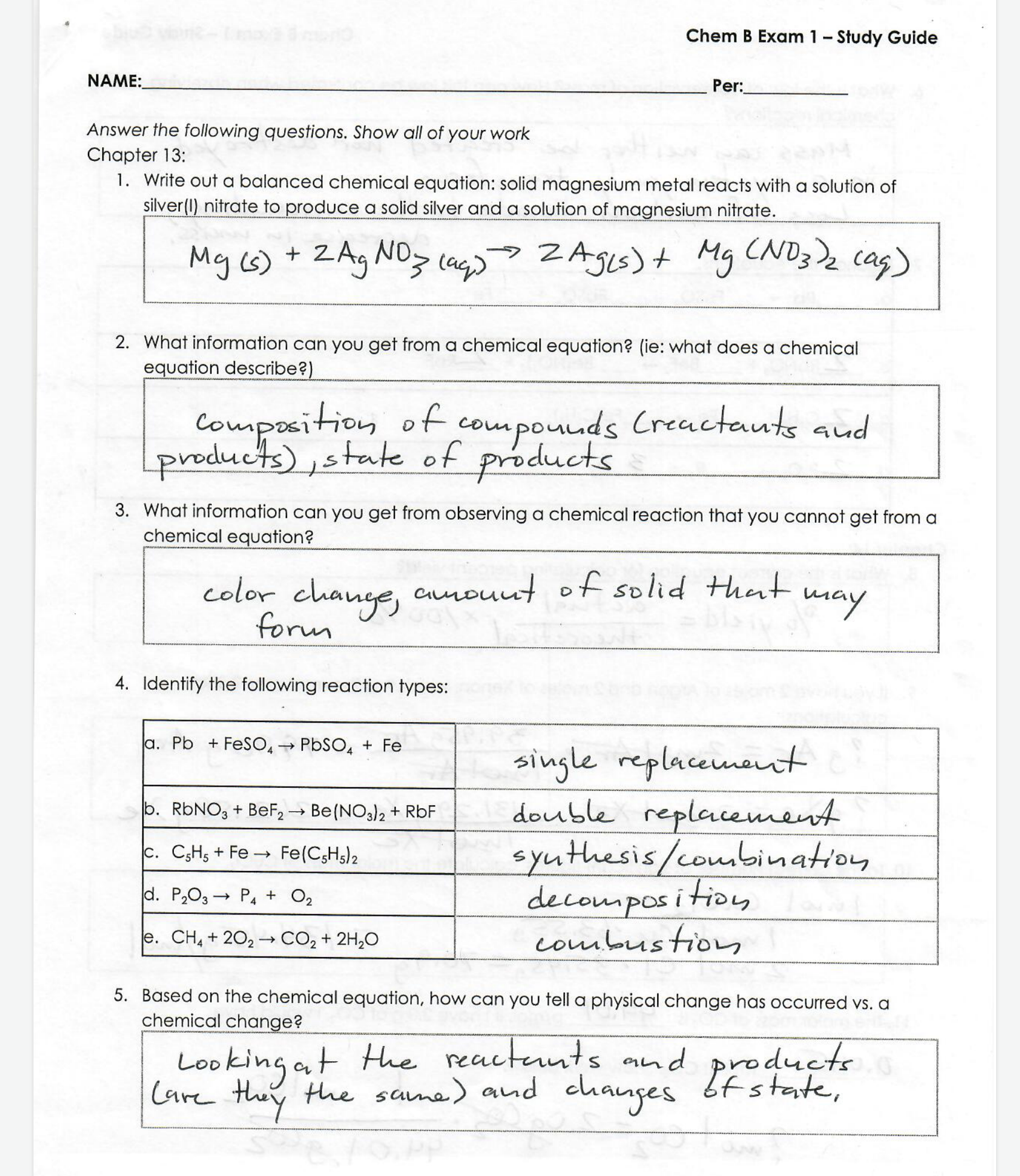Answer the following questions: 1. Write out a balanced chemical equation: solid magnesium metal reacts with a solution of silver(I) nitrate to produce a solid silver and a solutio... Answer the following questions: 1. Write out a balanced chemical equation: solid magnesium metal reacts with a solution of silver(I) nitrate to produce a solid silver and a solution of magnesium nitrate. 2. What information can you get from a chemical equation? (i.e.: what does a chemical equation describe?) 3. What information can you get from observing a chemical reaction that you cannot get from a chemical equation? 4. Identify the following reaction types: a. Pb + FeSO4 → PbSO4 + Fe b. RbNO3 + BeF2 → Be (NO3)2 + RbF c. C5H5 + Fe → Fe(C5H5)2 d. P2O3 → P4 + O2 e. CH4 + 2O2 → CO2 + 2H2O 5. Based on the chemical equation, how can you tell a physical change has occurred vs. a chemical change?

Understand the Problem
This appears to be a chemistry exam or study guide. The questions cover topics such as writing balanced chemical equations, interpreting chemical equations, identifying reaction types, and distinguishing between physical and chemical changes.
Answer
Answers to the chemistry questions are provided in the answer section.
- Mg (s) + 2AgNO3 (aq) → 2 Ag(s) + Mg(NO3)2 (aq)
- Composition of compounds (reactants and products), state of products
- Color change, amount of solid that may form
- a. single replacement b. double replacement c. synthesis/combination d. decomposition e. combustion
- Looking at the reactants and products (are they the same) and changes of state
Answer for screen readers
- Mg (s) + 2AgNO3 (aq) → 2 Ag(s) + Mg(NO3)2 (aq)
- Composition of compounds (reactants and products), state of products
- Color change, amount of solid that may form
- a. single replacement b. double replacement c. synthesis/combination d. decomposition e. combustion
- Looking at the reactants and products (are they the same) and changes of state
More Information
The answers provided are based on the study guide and cover balancing equations, interpreting chemical equations, identifying reaction types, and distinguishing between physical and chemical changes.
Tips
Pay attention to the states of matter in the balanced equation. When identifying reaction types, consider what the reactants are doing.
AI-generated content may contain errors. Please verify critical information